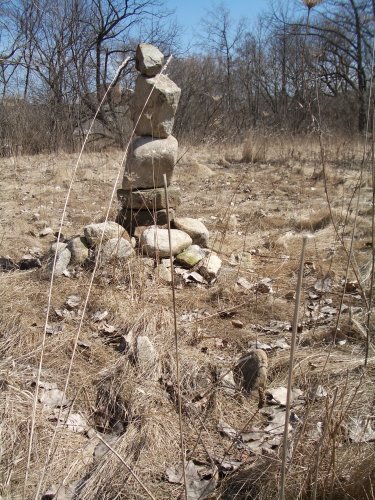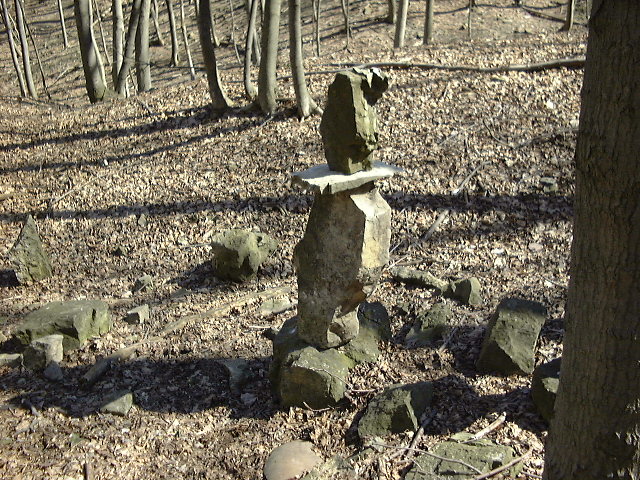
The centre of the circle

The east marker

| back | index | forward |

During the DVSA years I developed an interest in the stacking of objects. It started in my first year. I would take long walks through the woods around Dundas. Stacking stones where suitable stones could be found. Dundas Ontario happens to be situated in a valley created by the Niagara Escarpment. With a ridge of sedimentary rocks around. Rocks of all sizes are easily found.
These photos here are from an arangement piled in a field near the school. The photo was taken a couple of years after the initial piling. The field has never been developed. It's really a nice little triangle of land. Wedged into the corner of Ogilvie st. and Govenor's Road. A creek runs through the rear. The land has been for sale for years. I imagine the next time I walk past it there will be condominiums shoe horned in.


The east marker
Stacking is a very primal system of defining points in the landscapes. A method for marking out space. Used by every culture since the stone age. One might say this practice ushered in a new age for humans. The art of placeing objects in context to the landscape around it. Stacking stones is a remodeling of natural order. Taking bits of the landscape and realigning it. Creating new order is a unique Human instinct.
For centuries shcolars have been humming and hawing about the use of stone circles. I propose that it is infact no mystery. Merely a instict. Provide a culture with wealth and labour and they will build many beautiful things. The reason is secondary to the fact that humans MUST create. Humans will always find a reason to create. All that is required is time. Asking "why" is rather. Does an artist need a reason to doodle a silly little cartoon. No they do it because they have the time, and luxury.
These next two photos are from a piece created along side the Bruce Trail. To pin a location down. It was situated just below the Sanitarium in Hamilton Ontario.

Spine marks North-South
These two compositions have long since been dismantled. Such is the nature of stone art of this scale.

| back | index | forward |
